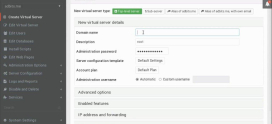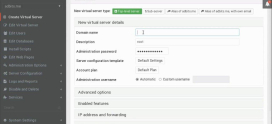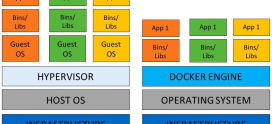
Sustainable Cloud Hosting: How to Get Started
Have you ever thought about the environmental toll of our digital activities? With everything from streaming services to cloud storage, our online habits are contributing to a growing carbon footprint. It can feel overwhelming, can’t it? Asking ourselves how we can help the planet while still enjoying technology is a challenge that many of us face. The good news is that sustainable cloud hosting provides a more environmentally friendly option for your online needs. But where do you even start? Don’t worry; you’re not alone in this pursuit. In this article, we’ll explore everything you need to know about sustainable cloud hosting, breaking it down into manageable steps. By the end, you’ll feel empowered to make a switch that benefits both your digital life and the environment.
Understanding Sustainable Cloud Hosting
Before diving into how to get started, let’s clarify what sustainable cloud hosting truly means. In simple terms, it’s cloud hosting that focuses on reducing environmental impact. But how? Sustainable cloud providers utilize renewable energy resources, optimize their hardware for efficiency, and implement various methods to minimize carbon emissions. Think of it like choosing to drive a hybrid car instead of a gas guzzler; you’re still getting from point A to B, just in a way that’s kinder to the planet.
Why Choose Sustainable Hosting?
You might be wondering, “Why does this even matter?” Here are some key reasons:
- Environmental Responsibility: Every digital service consumes energy. By opting for sustainable hosting, you contribute to the reduction of carbon footprints.
- Cost-Effectiveness: Sustainable providers often utilize cutting-edge technology that can lead to cost savings on energy bills.
- Brand Image: For businesses, showcasing an eco-friendly hosting choice can enhance customer loyalty and brand reputation.
How to Get Started with Sustainable Cloud Hosting
Ready to make the switch? Here’s a step-by-step guide to help you transition to sustainable cloud hosting.
1. Evaluate Your Current Hosting Needs
Analyze your current requirements. Do you run a personal blog, a business website, or an e-commerce store? Understanding your specific needs, such as storage, traffic, and functionality, will help you make an informed decision.
2. Research Sustainable Providers
Take the time to research hosting providers. Look for companies like DarazHost, known for their commitment to sustainability. Check their websites for information on energy usage, their power sources, and certifications like Energy Star or LEED.
3. Compare Features
When picking a provider, consider the following:
- Security: Make sure the hosting services offer strong encryption and regular backups.
- Customer Support: Reliable support can save you headaches down the line.
- Scalability: Your hosting needs may grow, so opt for a provider that can easily accommodate that growth.
A Case Study: Making the Switch to DarazHost
Let’s illustrate this with an example. John, a small business owner, was hosting his e-commerce site with a traditional provider. He realized the growing demand for sustainability and switched to DarazHost. After choosing a sustainable plan, John noticed improved website performance due to their optimized servers, alongside the satisfaction of knowing his hosting was powered by renewable energy. The result? Increased sales and a positive customer response. John’s story highlights that switching to sustainable solutions can benefit both the environment and your business.
Tips for Implementing Sustainable Practices
Beyond just choosing a sustainable cloud hosting provider, there are various practices you can implement:
- Optimize Your Website: Reduce image sizes, minify CSS/JavaScript, and enable browser caching to lighten the load on servers.
- Utilize CDN Services: Content Delivery Networks can distribute your content across multiple locations, minimizing energy use.
- Regularly Review Usage: Use analytics tools to assess your site’s traffic and server usage to ensure efficiency.
Monitoring Your Impact
Once you’ve made the switch, it’s essential to track your environmental impact. Look for metrics provided by your hosting service that detail energy savings and emissions reductions. You can also utilize online tools to measure the carbon footprint of your digital activities. Regular monitoring ensures you remain on track with your sustainability goals.
Getting Involved in Broader Initiatives
Consider participating in broader sustainability initiatives. Many organizations focus on promoting eco-friendly practices in technology. Engaging in these communities not only enhances your knowledge but also aligns you with like-minded individuals who share your values.
FAQs
What is sustainable cloud hosting?
Sustainable cloud hosting refers to cloud services that use eco-friendly practices to minimize environmental impact. This includes using renewable energy sources to power data centers and optimizing hardware for energy efficiency.
How do I know if a cloud host is sustainable?
Check for certifications like Energy Star, features of their renewable energy sourcing, and documentation on their carbon footprint reductions. Reading customer reviews can also give insight into their sustainability efforts.
Is sustainable hosting more expensive?
While some sustainable hosts may charge a premium, many offer competitive pricing due to cost savings from energy efficiency. Be sure to compare features and long-term benefits.
Can using a sustainable host improve my website’s performance?
Many sustainable hosting providers utilize advanced technologies that can enhance website performance, such as faster servers and improved load times.
How can I reduce my website’s carbon footprint?
Optimize your website’s performance, use efficient coding practices, and implement energy-saving measures, such as leveraging a CDN.
What role does customer support play in sustainable hosting?
Good customer support ensures that any technical issues are resolved quickly, which can improve overall efficiency and reduce the time your site may consume energy when down.
Can I switch my existing hosting plan to a sustainable one?
Yes! Most hosting providers allow you to migrate your site easily. Just check your new provider’s instructions for transitioning smoothly.
How can I advocate for sustainability in tech?
Share your knowledge with peers, engage in online communities, participate in sustainability events, and choose eco-friendly tech solutions.
Are there any certifications for sustainable cloud hosting?
Yes! Look for certifications like Energy Star, Green-e, and LEED that indicate a commitment to sustainability.
Conclusion
Making the move to sustainable cloud hosting may seem like a daunting task, but it’s an empowering step towards a better future for our planet. By choosing solutions that are environmentally responsible, you’re not just doing yourself a favor—you’re contributing to a larger movement For sustainability in the tech industry. Remember, every small change counts, and by following the steps outlined in this article, you’ll not only enhance your digital experience but also help in reducing the overall carbon footprint of the internet.
Now is the time to take action. Start by evaluating your needs, researching sustainable providers like DarazHost, and implementing eco-friendly practices in your digital life. Together, we can create a more sustainable future and enjoy technology without compromising our planet. Your choice matters—make it count!









